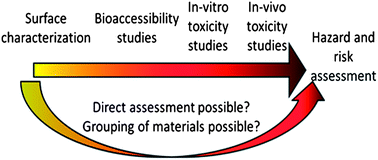Metal release from stainless steel powders and massive sheets – comparison and implication for risk assessment of alloys
Abstract
Industries that place metal and alloy products on the market are required to demonstrate that they are safe for all intended uses, and that any risks to humans, animals or the environment are adequately controlled. This requires reliable and robust in vitro test procedures. The aim of this study is to compare the release of alloy constituents from stainless steel powders of different grades (focus on AISI 316L) and production routes into synthetic body fluids with the release of the same metals from massive sheets in relation to material and surface characteristics. The comparison is justified by the fact that the difference between massive surfaces and powders from a metal release/dissolution and surface perspective is not clearly elucidated within current legislations. Powders and abraded and aged (24 h) massive sheets were exposed to synthetic solutions of relevance for biological settings and human exposure routes, for periods of up to one week. Concentrations of released iron, chromium, nickel, and manganese in solution were measured, and the effect of solution pH, acidity, complexation capacity, and


 Please wait while we load your content...
Please wait while we load your content...